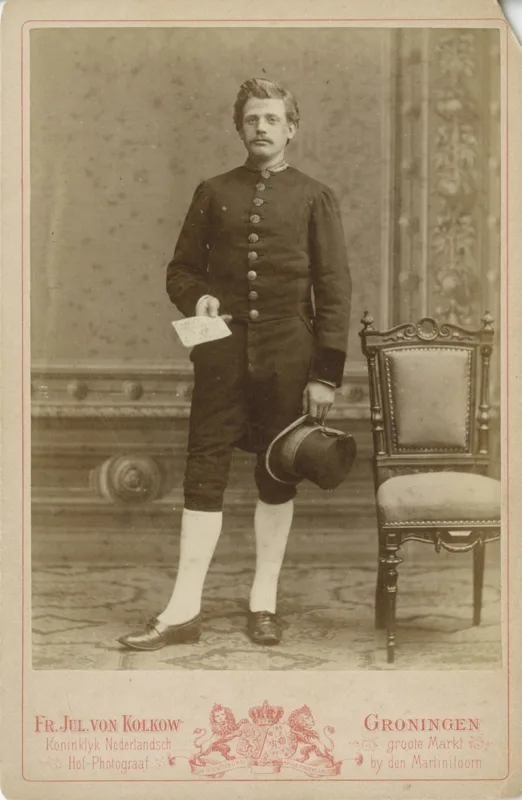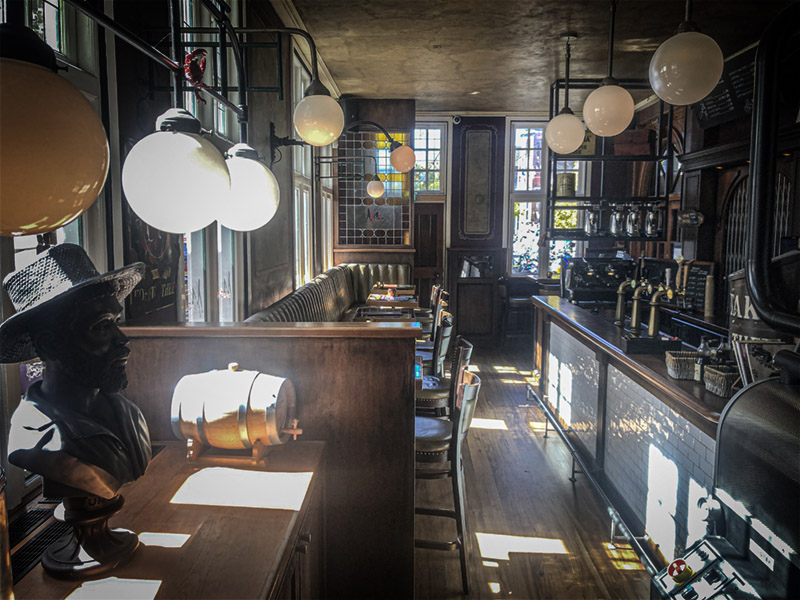waybackmachine
The beadle houseFrom the UG’s administrative centre to a bar
The building has three storeys, lovely stepped gables, and the windows are set in subtle arched niches. Unfortunately, very few people know the structure: Broerstraat 1 is dwarfed by the Academy building’s large and imposing façade, which takes up all the attention.
The Academy building is like a big brother to Broerstraat 1, having been built in 1909 to the Broerstraat’s 1920. They’re largely made of the same materials and their styles are similar, although little brother’s architecture is a bit more subdued.
There were no classes taught or experiments done behind the arched windows: the building was the beadle’s domicile. Just like churches used to have rectories, the Academy building had a special house for the beadle so he could quickly get to work.
Serene
There’s something very serene about the photo from 1925 showing the beadle house on the right and the imposing Academy building in the back. Back then, the Broerplein had a fancy little driveway with grass, a shrubbery, and flowers on either side, separated from the rest of the street with a low cast-iron fence. A single old car is waiting for its driver in front of the Academy’s steps.
A handcart is parked against a lamp post, its owner nowhere to be found. In fact, there are no people in the photo at all: perhaps it’s the middle of summer, when there are no students on the steps or even anyone outside.
If it weren’t for the darling curtains upstairs, you might even think the beadle house is unoccupied, although the open windows on the ground floor show that it isn’t.
Right hand
The beadle served as the rector magnificus’ right-hand man. He would take care of administrative tasks including registering students, collecting tuition fees, making exam schedules, and much more. He was also in charge of opening the building in the morning and closing it at night, making sure the clock was keeping proper time, the heating was on, and the classrooms were clean. The job of beadle was a big one.

Today, the beadle position is largely ceremonial. They can be seen at official events and ceremonies such as PhD graduation ceremonies and the start of the academic year, wearing a gown and carrying the official beadle staff. It’s also no longer a paid job; the concierges at the building now act as beadles.
And while the job used to be just for men for a long time, we also have female beadles these days. Utrecht was the first university to hire a female beadle, in 1971. One of the nine beadles at the UG is a woman: Meryem Riad, who works at the Campus Fryslân in Leeuwarden.

The beadle house is no longer a personal residence. These days, it’s part of bar and restaurant Mr. Mofongo. The empty sidewalk next to the house is now a patio with tables and large umbrellas. The living room where the beadle used to do the university’s administration and count tuition fees, now houses a lovely wooden bar with several beers on tap.
Sources for this article: Levend Erfgoed Groningen, the book ‘Knap bezit – gebouwen van de Rijksuniversiteit Groningen in kunsthistorisch perspectief’ by C.E. de Jong-Janssen, and the second part of the trilogy ‘Universiteit van het Noorden’ by UG historian Klaas van Berkel.